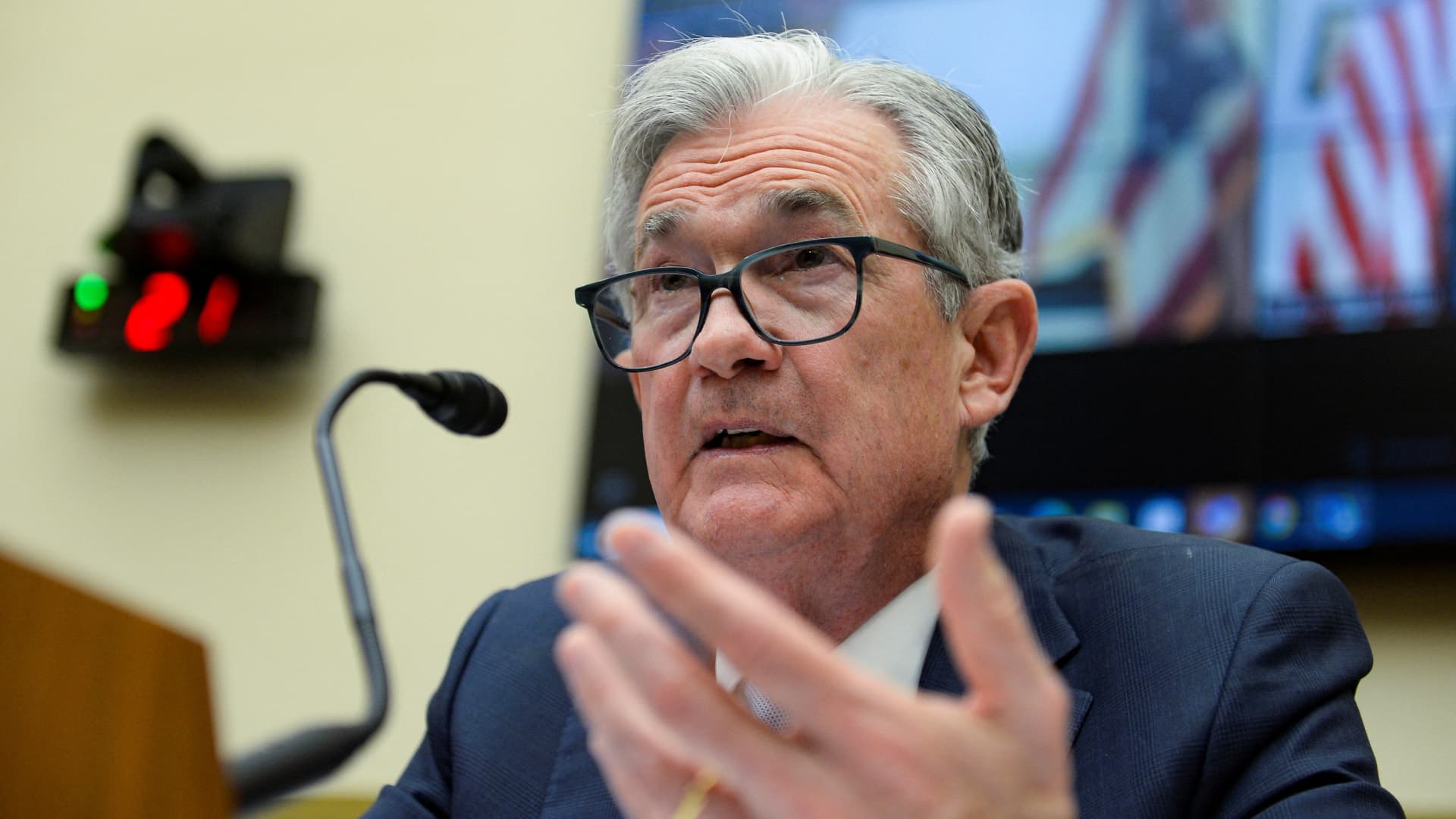
Raising interest rates to tame demand — and therefore inflation — is not the right solution, as high prices have been driven mainly by supply chain shocks, one analyst said.
Global manufacturers and suppliers have been unable to produce and deliver goods to consumers efficiently during Covid lockdowns. And more recently, sanctions imposed on Russia have also curtailed supply, mainly of commodities.
“Supply is very difficult to manage, we are finding across a whole bunch of industries, a whole bunch of businesses, they’re having very different challenges just turning the taps back on,” Paul Gambles, managing partner at advisory firm MBMG Group, told CNBC’s “Street Signs” on Monday.
Referring to the energy crisis that Europe faces as Russia threatens to cut off gas supplies, he said that “on American independence day, this is sort of a co-dependence day where Europe is absolutely shooting itself in the foot, because so much of this has come about as a result of sanctions.”
“And the Fed are the first ones to put up their hands and say monetary policy can’t do anything about supply shock. And then they go and raise interest rates.”
The U.S. Federal Reserve increased its benchmark interest rate by 75 basis points to a range of 1.5%-1.75% in June — the biggest increase since 1994. Fed Chair Jerome Powell (above) flagged there could be another rate hike in July.
Mary F. Calvert | Reuters
Governments around the world have, however, focused on cooling demand as a means of reining in inflation. The lifting of interest rates is intended to put demand more on an even keel with constricted supply.
The U.S. Federal Reserve, for example, increased its benchmark interest rate by 75 basis points to a range of 1.5%-1.75% in June — the biggest increase since 1994 — with Chair Jerome Powell flagging there could be another rate hike in July.
The Reserve Bank of Australia is set to raise rates again on Tuesday, and other Asia-Pacific economies like the Philippines, Singapore and Malaysia have all jumped on the same rate hike bandwagon.
The Fed said in a statement it opted to raise rates as “overall economic activity” appeared to have picked up in the first quarter of the year, with rising inflation reflecting “supply and demand imbalances related to the pandemic, higher energy prices, and broader price pressures.”
Monetary policy the ‘wrong solution’
Gambles said demand is still below the level it was at before the pandemic started, but would’ve fallen short even without the roadblocks of Covid.
“If we look at where employment would have been in the States, if we hadn’t had Covid, and we hadn’t had the lockdowns, we’re still about 10 million jobs short of where we would be. So there’s, there’s actually quite a lot of potential slack in the labor market. Somehow that’s not translating to the actual slack,” he said.
“And, again, I don’t think that’s a monetary policy issue. I don’t think monetary policy would make a great deal of difference to that.”
With supply shocks rearing their ugly heads from time to time, it would be hard for central banks to maintain a sustained grip over inflation, Gambles added.
Gambles argued that the United States should instead look at a fiscal boost to fix inflation.
“The U.S. federal budget for the financial year 2022 is $3 trillion on a gross basis lighter than it was in 2021. So we’ve got, you know, we’ve got a huge shortfall going into the U.S. economy. And, you know, there’s probably very little that monetary policy can do about that,” he said.
Gambles says adjusting monetary policies is “the wrong solution to the problem.”
Other “unconventional economists” — cited by Gambles in the interview — such as HSBC senior economic advisor Stephen King, have also put forward analyses saying that it’s not simply either demand or supply shock that is to blame for inflation, but the workings of both sides of the equation.
Both pandemic lockdowns, supply chain upheavals and the Russia-Ukraine war, as well as the stimuli governments pumped into their economies and loose monetary policies, have contributed to rising inflation, economists like King have said.
“Economically, the COVID-19 crisis was regarded by many primarily as a demand challenge. Central banks responded by offering very low interest rates and continued quantitative easing, even as governments offered huge fiscal stimulus,” King said in a note earlier this year, referring mainly to the pandemic.
“In truth, COVID-19 had only limited lockdown-related, demand-side effects in the advanced economies.”
“Supply-side effects have proved to be both large and far more persistent: markets now work less well, countries are economically disconnected, and workers are less able to cross borders and, in some cases, less readily available within borders. Loosening policy conditions when supply performance has deteriorated so much is only likely to lead to inflation.”
Since supply is unable to respond fully to increased money coursing through economies like the United States, prices have to rise, he added.
Still a popular antidote
Nevertheless, interest rate hikes remain the popular antidote to fix inflation.
But economists are now concerned that the use of interest rate hikes as a tool to solve the inflation problem could trigger a recession.
A rise in interest rates make it more expensive for firms to expand. That, in turn, could lead to cuts in investments, ultimately hurting employment and jobs.
